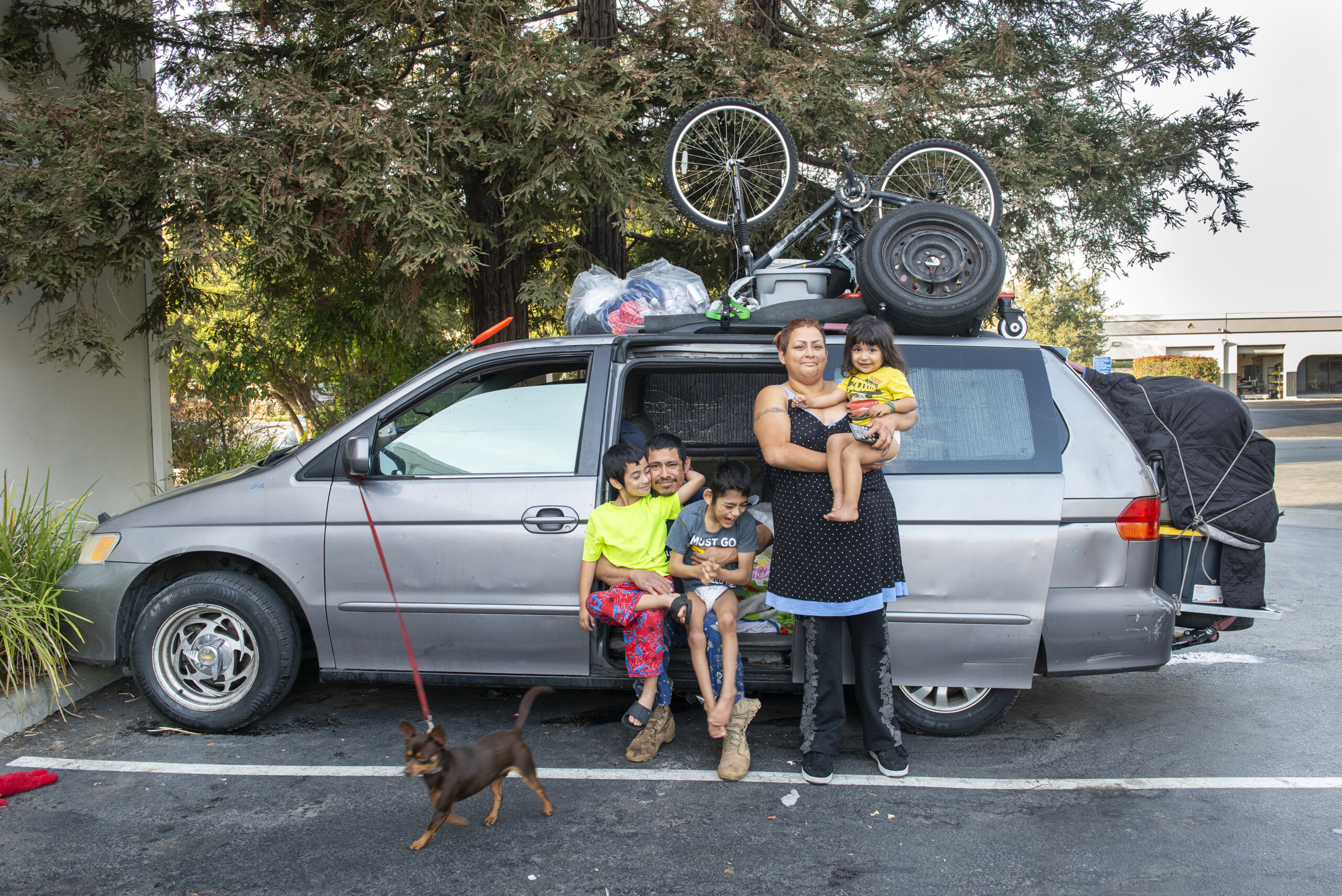Guest column by Tim Davis: Gilroy’s South County Compassion Center paves pathways into housing
Last year, the Compassion Center provided life-saving support to 799 unhoused individuals
![]()

Photo courtesy Kirti Fatania-Bassendine
Carlos and Faviola with their children, Alex (9), Bruce (7,) Destiny (3) and their dog Rocky, live out of their van. Photo was taken several years ago.
By Tim Davis

Tim Davis
Homelessness destroys lives, drains resources, and dissolves hope for those crippled by it.
For those experiencing homelessness in South County — estimated to be about 900 — the impact is obvious: loss of basic resources required for survival and personal safety, disruption of income, loss of social ties, impaired health, and a 30-year average decline in life expectancy. But homelessness also impacts the general community’s health, security and quality of life by straining the capacity of healthcare and social services, and costing our community an average of $83,000 per person, per year. It falls largely on small nonprofits to respond to the immediate needs of those who lose their housing in the South County.
Last year, the Compassion Center provided life-saving support to 799 unhoused individuals, primarily in Gilroy, and nearly all those counted there. Through twice-weekly “Unhoused Popup Markets,” and two weekly encampment tours, our outreach team delivered enough food last year for 28,086 meals, 4,025 articles of clothing, 1,198 hygiene kits, 728 showers and laundry loads, and more.
 Providing the basics is only the first step to aiding people in crisis. Compassion Center case managers strive to resolve homelessness by eliminating as many barriers to housing as possible. One barrier we eliminate most frequently is to provide an accurate “housing assessment” for each unhoused individual who wants one. This assessment puts them into a queue for housing based on vulnerability.
Providing the basics is only the first step to aiding people in crisis. Compassion Center case managers strive to resolve homelessness by eliminating as many barriers to housing as possible. One barrier we eliminate most frequently is to provide an accurate “housing assessment” for each unhoused individual who wants one. This assessment puts them into a queue for housing based on vulnerability.
It has helped an average of 100 South County individuals access permanent housing each year. Other wrap-around services include dental care, mental health treatment, transportation vouchers, referrals to legal services, shelter referrals, help with their resumes, and job searches. We also provide case management services to South County’s only shelter for the unhoused at the Gilroy Armory.
Our Morgan Hill Safe Parking Program helps high-functioning, recently unhoused individuals build a lasting transition into affordable housing. Started in collaboration with the city of Morgan Hill, the Interfaith Community of South County, and the Morgan Hill Bible Church, this supportive transitional housing model provides eight households with a safe place to sleep while working with a case manager to build their capacity to acquire and retain housing. More than 80 safe park participants have transitioned into permanent housing since inception in 2017.
 Through our homeless prevention program, we have helped more than 150 families avoid imminent eviction by providing rental, utility and deposit assistance. Last year, through our outreach program, 89 unhoused individuals secured supportive housing — adding years to their lives, and saving our community approximately $8.5 million in a single year. We are on track to create pathways into housing for at least another 100 individuals by the end of June.
Through our homeless prevention program, we have helped more than 150 families avoid imminent eviction by providing rental, utility and deposit assistance. Last year, through our outreach program, 89 unhoused individuals secured supportive housing — adding years to their lives, and saving our community approximately $8.5 million in a single year. We are on track to create pathways into housing for at least another 100 individuals by the end of June.
But there is much work to be done to make that happen. As part of this ongoing series on homelessness in South County, we’ll explore the ways in which the Compassion Center, in cooperation with partners, is fighting to alleviate the suffering from homelessness, and ultimately resolve it for the benefit of the community. We invite interested community members to support this effort.
Tim Davis is the executive director of the South County Compassion Center. Contact him at [email protected].
- Family fun: Christopher High School’s Got Talent! 8 p.m. May 18 - May 14, 2024
- Guest column by Kiera Gallagher: Country concert helps women in Africa build a well for clean water - May 11, 2024
- Downtown Gilroy .. with Jeff Orth: Downtown Gilroy is blooming with exciting new developments - May 11, 2024
